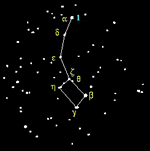
for New England
| IPM Home |
| About IPM
|
| About Polaris
|
| Ron Prokopy Tribute
|
| Bees in the Orchard
|
| Potato Leafhoppers and Fire Blight
|
| Weather Monitoring
|
| Members Only
|
| Links
|
Weather Monitoring In the Orchard
Both weather forecasting and weather tracking are important for orchard management, not only for frosts, storms and suchlike dramatic events, but temperature, rainfall, relative humidity, and leaf wetness occurrence, which are of huge importance in predicting plant disease incidence and insect life cycles. Alas, forecasting is still the weak link in the chain here – one of my colleagues said he’d been trying to analyze forecasted vs. actual weather data for the past couple of years, and figured that we’re lucky to get a good forecast up to 24 hours out – past 24 hours, forget it! Which gibes pretty well with what we’ve observed in trying to coordinate orchard management with predicted weather for lo, these many years! (Honestly, I’d like to see these people try to run a farm based on the data they give us!) Still, we need whatever forecasts we can lay our hands on, as well as on-site data for temperature, rainfall, etc. So:
Forecasts
Since everyone ultimately relies on the data from NOAA (National Oceanic and Atmospheric Administration), why not go right to the source and check the National Weather Service forecast? http://www.erh.noaa.gov/er/box/ gives you the Taunton office from which you can get to a local forecast page. I’m not crazy about their little blurbs summarizing the daily predictions – I’d like to see a lot more detail on probabilities, times, and so forth. They do have an “Hourly weather graph” which gives their best guess for the upcoming 48 hours. Also, I try to remember to take a look at the “Forecast Discussion” which is highly technical and loaded with incomprehensible acronyms, but can give you a rough idea of how sure they are (or not) of the stated forecast. It’d be nice to see more of that!
Of all the ‘free’ forecasts out there, people seem to like Accuweather the best http://www.accuweather.com/ for general purposes. Weather Underground http://www.wunderground.com/ is another nice site for general weather information.
Skybit is a commercial provider of site-specific forecasts. http://www.skybit.com/ For a reasonable monthly fee, they will fax or email detailed forecast information every day, including wind speed, which is something a lot of people find useful. As far as I know, they still allow people to sign up by the month – you’re not stuck with an annual contract just so you can get April, May, and June forecasts, for instance. I’m not aware that anyone has really sat down and evaluated the accuracy of the forecasts, either in absolute terms or compared with other forecasts. As the saying goes, everyone talks about weather forecast evaluation, but no-one does anything about it...
Weather Tracking
Skybit also does on-site weather tracking, providing satellite data on temp, rainfall, and the rest along with the forecasting. The data seem reasonably accurate, again without having done a side-by-side comparison.
There are any number of electronic weather gizmos that can provide on-site weather monitoring. I cut my teeth on Davis Instruments http://www.davisnet.com/ before they even started doing ag-specific instruments, and I have heard positive comments from growers who use their units. They now provide wireless sensors, which I do think is a positively brilliant idea, allowing you to put the sensor where you need it, and leave the main processing unit in your office, hooked up to your computer. With a little tinkering, you can set the software up to show the weather you need; I like to look at the temperature/leaf wetness data on a graph, the way the hygrothermographs do.
Spectrum Technologies http://www.specmeters.com/home_usa.html is really oriented to agriculture, even providing software that runs models for predicting apple scab, fire blight, and so on. I’m not as familiar with them, but their units seem to be pretty reliable and easy to use. Personally, I’m not nuts about the idea of having the system run the model for you – with the Mills chart, for instance, there are a lot of modifications http://www.agf.gov.bc.ca/cropprot/tfipm/applescb.htmhttp://www.gemplers.com/tech/ipm-mgmt.htm , and it’s nice to see where your current data sits with regard to light, moderate, and heavy infections. Similarly with fire blight, there’s an on/off switch at 60 F in Maryblyt that is a little easier to spot if you are running the model yourself. But on the other hand, it’s also nice to get a quick-and-dirty result without having to fuss around too much with the data!
Hygrothermographs are getting hard to come by, and the modified type (which replaces the humidity sensor with a leaf wetness arm) is no longer produced, as far as I know. The Weathertronics Hi-Q hygro is still available from a number of outdoor specialist suppliers, but you’d have to do the leaf wetness modification yourself. They are a nice, low-tech, reliable way of collecting orchard weather data.
This is a quick rough-and-ready survey of what’s out there – I’d love to hear more from people about what’s available, what they’re using, and how they like it – send me an email, or, if you’re a subscriber, post a message in the Forum. Thanks!